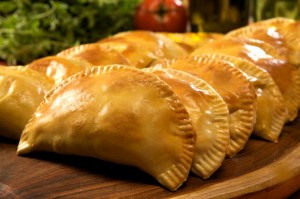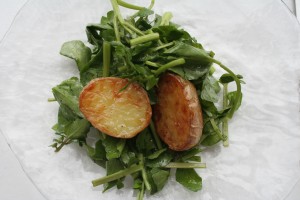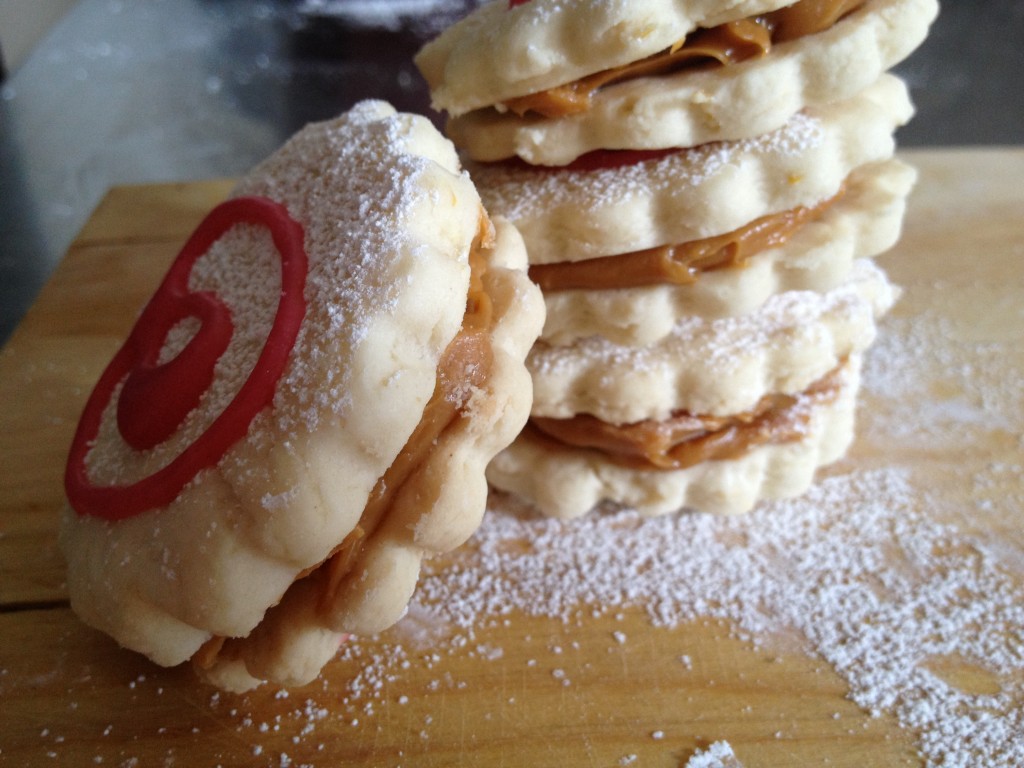Argentina
Alfajores: The King of Cookies08.03.13
I still remember the first time I tried a Havanna Alfajor. I was a newly minted college graduate who moved down to Miami to be closer to home. In this sunny strip of paradise, I landed my first job as a fund trader at a Spanish bank. I worked with a ton of private bankers from all over South America and Spain, a group of movers and shakers with monogrammed shirts continuously nostalgic about the worlds they had left behind.
Those who were lucky enough to fly home for work always returned with a box of Havanna Alfajores stocked with gold and silver pucks of dulce de leche treasures. The golden wrappers indicated a dark chocolate covered Alfajor, while the silver wrapper meant a cookie dressed in a thin veil of white chocolate. I loved the golden wrappers and the dense and crumbly cookies they protected, which had been dipped in milk chocolate and filled with a tangy dulce de leche. They were the most beautiful way to sweeten an afternoon cup of tea. For me and all my friends who worked with me, they meant sustained sugar-fueled giddiness for hours. more »
Artisanal Empanadas05.27.09

Empanadas galore at the Emporium
We meet again05.01.09

Watercress and warm potato salad
At home, we call it berro. I remember my Mom snacking on it happily, trying to convince me to try it by raving about how nutritious it was. I would nibble on a stem and spit it out, my 10-year old palate tortured by its bitter bite.
Fast forward 20 years and inspired by this memory of youth, I find myself ordering it at Libertador, an Argentinian parrillada restaurant in the neighborhood that opened its doors a few weeks ago, bravely emerging in the midst of it all. It is a warm airy space with an open kitchen where the chef skillfully grills classic cuts of Argentinian beef like lomo, entraña and bife.
During my visit, before indulging in a tender yet beautifully charred skirt steak, I dug into a watercress salad dressed with garlic. The sweetness of the garlic was a successful balance to the pungency of the green; however, its quantity weighed down the leaves, turning the dish into an edible guard against vampires.
Coming home a bit discouraged but bitten by the watercress bug, I rummaged through my cookbooks and found a delicious way to incorporate this ingredient into a simple dish that takes me back, yet settles me into the present with its refreshing yet comforting flavors.
Watercress and warm potato salad (adapted from Martha Stewart Living Cookbook)
12 small creamer potatoes scrubbed
3 tablespoons olive oil
salt
pepper
sugar
1/2 lemon with zest grated
1 teaspoon red wine vinegar
2 teaspoons lemon juice
1 bunch watercress with hard parts trimmed off
Season potatoes with olive oil, salt and pepper and roast until golden at 375C(about 45 min.) In a bowl, combine lemon juice, zest, olive oil, vinegar, sprinkles of salt and sugar. Let rest until potatoes are done. Add potatoes to watercress and season with dressing.


Food For Thought